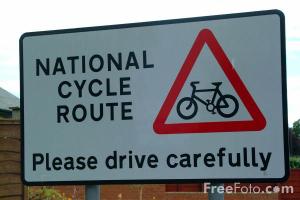Posts tagged ‘cycling route planning’
Cycling route planning
There’s a number of things to consider when planning a new cycling route: distance, elevation gains, gradations, etc. Additionally, you should consider traffic on the streets, parking conditions on the streets (e.g. is curb-side parallel parking allowed), width of the street, and the presence (or lack thereof) of bike lanes.
For the logistical considerations, there’s a number of things you can use, some of which will work better than others:
- Google Earth is a free program provided by Google. You can use the path feature to determine the distance of your route and you can scroll your mouse along the roads to see changes in elevation in order to get a general sense about the size of the hill. However, elevation gains and gradation are not determined automatically.
- Veloroutes.org is a free web-based service. It works off of Google Maps and you can trace your path in much the same way that Google Earth allows you to. However, the site will create an elevation profile for the entire route and provide you with total elevation gains and gradations. Not perfect, not quick, but a nice free upgrade on the information provided by Google Earth. It should be noted, however, that the maps being used appear to be out of date (I found this out the hard way on a ride the other day). Make sure you check Google maps directly to ensure that the roads you’re routing on still exist.
- Topo USA combines the great maps of Google Earth with the information provided by Veloroutes, but with the added bonus of making routing much, much easier (once you figure out how to use the program). The only downside is the cost: $99. A little pricey in my opinion, but the features are second to none. Also, big downer for me now: no version for Mac.
For the safety considerations, one of my favorite new innovations by Google, Google Street View, is amazing but only covers certain areas. Take a look at the view it provides of my favorite ride. (Yes, that’s the Pacific Ocean on the right hand side). As you can see, the vike lanes are clearly visible and you can get a pretty good idea of traffic during the day. It’s simple to use: just go to Google Maps, click on “Street View” and then drag the little yellow guy into a blue street.
Cycle safely

You must be logged in to post a comment.